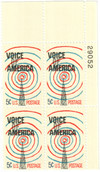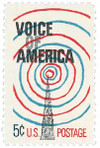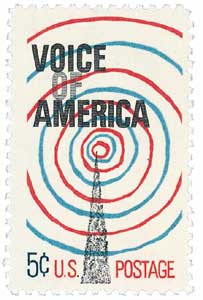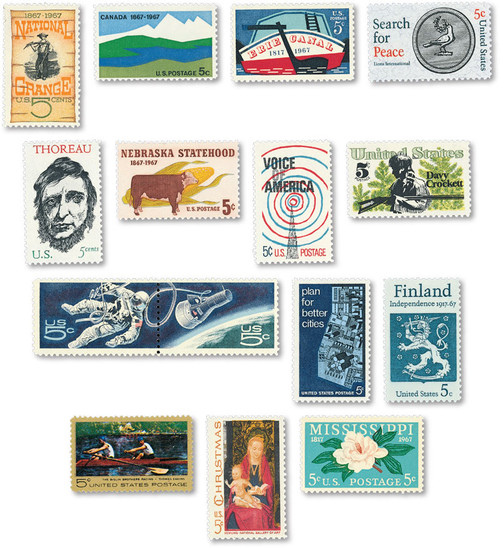
# 1329 - 1967 5c Voice of America
Quantity: 111,515,000
Voice Of America
Prior to World War II, private companies ran all American-run shortwave stations. These included the National Broadcasting Company’s International Network, which transmitted in six languages, and the Columbia Broadcasting System, with 64 stations in 18 countries.
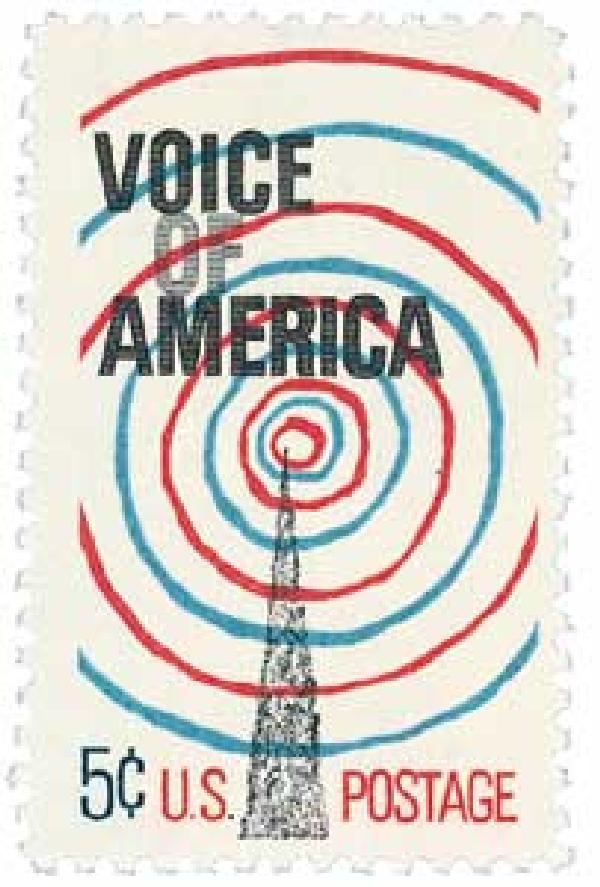
In 1939, the Federal Communications Commission established a new policy stating that “A licensee of an international broadcast station shall render only an international broadcast service which will reflect the culture of this country and which will promote international goodwill, understanding, and cooperation.” This was intended as part of the State Department’s Good Neighbor policy, though some saw it as a form of censorship.
Before the Japanese had attacked Pearl Harbor, the US Office of the Coordinator of Information was already giving war news to commercial shortwave radio stations. This information was provided by playwright and speechwriter Robert E. Sherwood through the Foreign Information Service (FIS). Then a week after the US entered the war in December 1941, the FIS began delivering its own broadcasts.
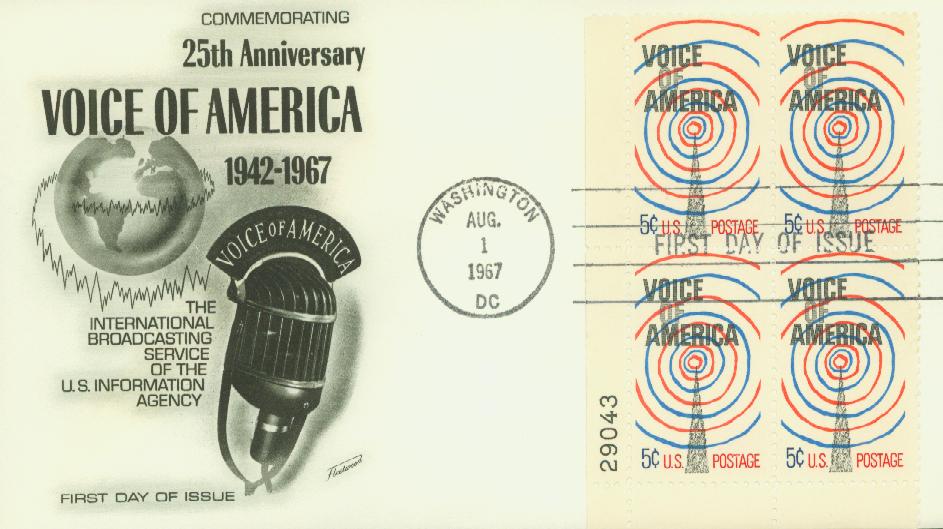
After that, the FIS recognized a need to establish a permanent organization and founded Voice of America on February 1, 1942. That day they delivered their first broadcast to Germany. That initial broadcast opened with “The Battle Hymn of the Republic” and was followed by a pledge: “Today, and every day from now on, we will be with you from America to talk about the war… The news may be good or bad for us – We will always tell you the truth.” President Franklin Roosevelt personally approved the broadcast.
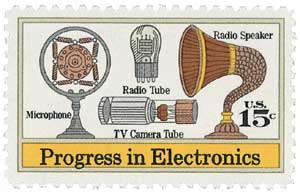
Later in 1942, the Office of War Information took over the Voice of America’s operations. They also came to an agreement with the British Broadcasting Corporation to share transmitters in Britain. And as the Allies succeeded in North Africa, Italy, and the Philippines, they established transmitters there as well. By the time the war ended, they had 39 transmitters offering service in 40 languages. They offered over 1,000 programs, broadcast from their offices in New York and San Francisco. These programs included news, music, and commentary.
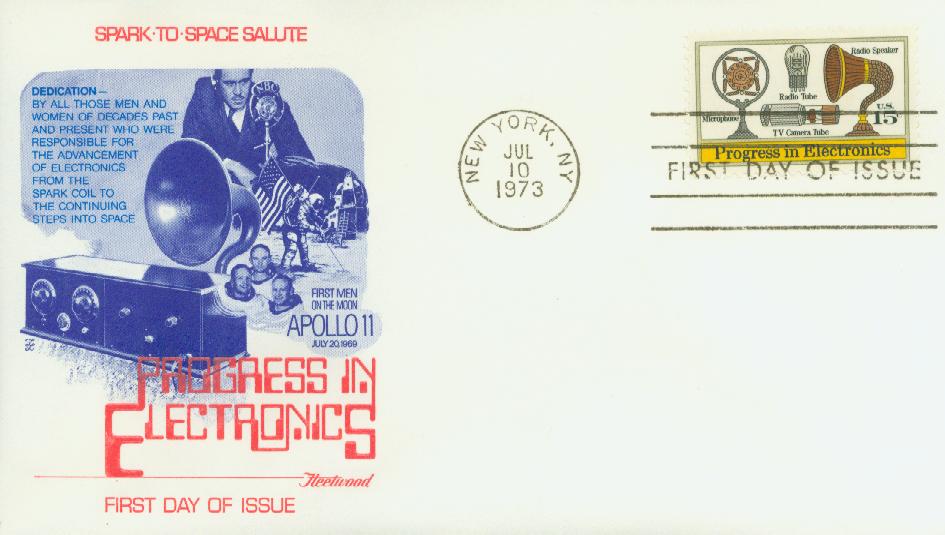
About half of the VOA’s services were discontinued in 1945 before they were transferred to the Department of State. Two years later, they began broadcasting to the Soviet Union to combat their propaganda. In the coming years, VOA installed a relay facility on a US Coast Guard cutter. It was supposed to be the first in a fleet of mobile broadcasting ships, but some accused them of being pirate radio ships and the project was abandoned.
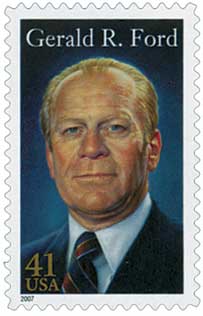
In the 1960s and 70s, the VOA carried some of the most important news of the day overseas, including Martin Luther King, Jr.’s “I Have a Dream Speech” and the moon landing. In 1976, President Gerald Ford awarded the VOA its charter with its mission “to broadcast accurate, balanced, and comprehensive news and information to an international audience.”
The VOA is still in operation today as part of the US Agency for Global Media. It provides digital, TV, and radio content in more than 40 languages transmitted around the globe.
Click here to visit the VOA website.
Quantity: 111,515,000
Voice Of America
Prior to World War II, private companies ran all American-run shortwave stations. These included the National Broadcasting Company’s International Network, which transmitted in six languages, and the Columbia Broadcasting System, with 64 stations in 18 countries.

In 1939, the Federal Communications Commission established a new policy stating that “A licensee of an international broadcast station shall render only an international broadcast service which will reflect the culture of this country and which will promote international goodwill, understanding, and cooperation.” This was intended as part of the State Department’s Good Neighbor policy, though some saw it as a form of censorship.
Before the Japanese had attacked Pearl Harbor, the US Office of the Coordinator of Information was already giving war news to commercial shortwave radio stations. This information was provided by playwright and speechwriter Robert E. Sherwood through the Foreign Information Service (FIS). Then a week after the US entered the war in December 1941, the FIS began delivering its own broadcasts.

After that, the FIS recognized a need to establish a permanent organization and founded Voice of America on February 1, 1942. That day they delivered their first broadcast to Germany. That initial broadcast opened with “The Battle Hymn of the Republic” and was followed by a pledge: “Today, and every day from now on, we will be with you from America to talk about the war… The news may be good or bad for us – We will always tell you the truth.” President Franklin Roosevelt personally approved the broadcast.

Later in 1942, the Office of War Information took over the Voice of America’s operations. They also came to an agreement with the British Broadcasting Corporation to share transmitters in Britain. And as the Allies succeeded in North Africa, Italy, and the Philippines, they established transmitters there as well. By the time the war ended, they had 39 transmitters offering service in 40 languages. They offered over 1,000 programs, broadcast from their offices in New York and San Francisco. These programs included news, music, and commentary.

About half of the VOA’s services were discontinued in 1945 before they were transferred to the Department of State. Two years later, they began broadcasting to the Soviet Union to combat their propaganda. In the coming years, VOA installed a relay facility on a US Coast Guard cutter. It was supposed to be the first in a fleet of mobile broadcasting ships, but some accused them of being pirate radio ships and the project was abandoned.

In the 1960s and 70s, the VOA carried some of the most important news of the day overseas, including Martin Luther King, Jr.’s “I Have a Dream Speech” and the moon landing. In 1976, President Gerald Ford awarded the VOA its charter with its mission “to broadcast accurate, balanced, and comprehensive news and information to an international audience.”
The VOA is still in operation today as part of the US Agency for Global Media. It provides digital, TV, and radio content in more than 40 languages transmitted around the globe.
Click here to visit the VOA website.






